
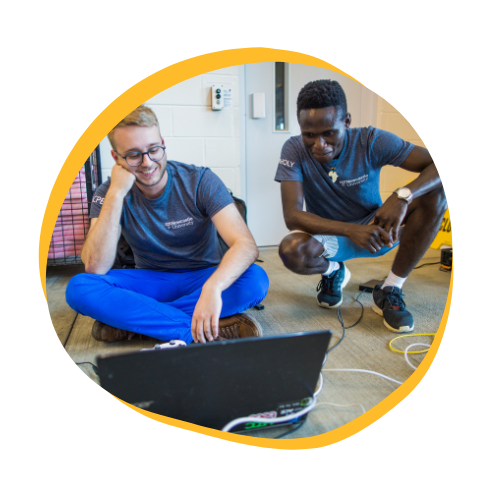
Everything you need to know about joining the MATE ROV Competition.
[ Challenges. Successful Experiences. Things to Consider. ]
MATE's ROV projects inspire a student mindset of entrepreneurship and innovation as they transform their teams into "start-up companies" that compete to accomplish tasks simulated from the real world. Students develop a wide variety of technical and workplace skills, including creativity, adaptability, and communication, as they work together to design, build, and operate their ROVs.
So should your school join the MATE ROV Competition? Let's discuss the potential challenges to a rewarding ROV design and competition experience, and summarize how successful ROV projects have met those challenges, and share relevant strategies for you to consider. While this guide is primarily directed at college teams, it is applicable to middle and high schools as well.
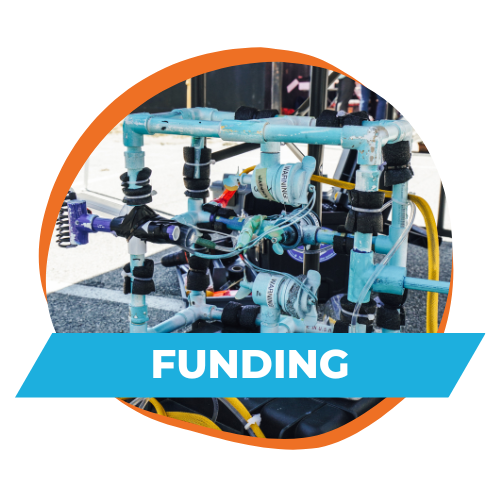
ROV projects need funds to cover the costs of equipment, travel and incidental expenses. Few colleges have room in their budgets to support these projects, so ROV teams must usually find other ways to obtain the funding they need to design, build, test and compete with their ROV.
ROV projects have raised funds from foundations, community/service organizations and the business community. At some colleges, several academic departments have sponsored student travel to an ROV competition; at other colleges, ROV projects were organized as campus clubs that were qualified to receive some college funding.
Note: Under the NSF grant for this project, MATE will provide a starter ROV kit of parts that consists of a control system, tether, thrusters, underwater housing, and more, as well as resource materials and initial training. Some funds are also available for team advisor and student travel.
- Ask one or more non-profit foundations to help.
- If your college has a foundation, start there.
- See if any campus departments would consider funding one or more students’ travel to an ROV competition.
- Ask local businesses for financial support; modest contributions from several (or more) sources can add up.
- Solicit support from large corporations that have a presence in your local community
- Don’t neglect the tech sector: Even if there are no tech companies in your community, your ROV project is training potential tech sector employees.
- See if any local community service organizations will help.
- Note: If your college has an office that is responsible for soliciting financial or other donations from local businesses, government agencies or community organizations, be sure to coordinate with that office before approaching any of these potential donors, in order to avoid approaching an organization that your college has already contacted.
- If your college provides funds for undergraduate research (e.g., supports a campus office to coordinate undergraduate research projects), see if any of those resources could be made available to help with your ROV project.
- If your college provides some funding for student clubs, see if any of those funds would be available to support your project and, if necessary, consider whether your project could be organized as a campus club.
- Consult your campus student government; they may have helpful knowledge or connections.
- Tap into as many information sources as you can, on and off campus; you might be surprised at how many leads turn up.
- If it’s not against your college rules, consider asking your student team to mount a “GoFundMe” campaign.
- When soliciting help of any kind be sure to come prepared with a brief description of the project and its advantages for students, businesses and the community (including the training of prospective employees and good public relations).

ROV projects need working space, access to a pool, a variety of specialized tools and equipment, training and technical advice, and secure storage space for supplies and equipment. It can be difficult to find the necessary equipment and obtain needed technical advice and training. (Storage space challenges are discussed here; working space and pool access issues are discussed in the next two sections.)
ROV project advisors report being able at times to get technical help for their student teams from instructors in a number of departments at their colleges. In addition, local companies have sometimes donated tools, equipment or supplies, space for secure equipment storage or, occasionally, technical engineering or business planning advice. On some campuses, secure storage space for equipment has been found in laboratories or in campus maintenance storage areas. One project was able to store equipment in an unused closet and roll the equipment out for working in a nearby classroom. And don’t forget that MATE will provide the initial ROV kit and resource materials as well as initial training.
- When approaching members of your local business community to solicit support be sure to make it clear that an alternative to helping with funding is the provision of in-kind support, including equipment and/or supplies, secure storage space, or technical or business planning advice.
- In a like vein, see if any local government, non-profit or community/service organizations could provide secure storage space or even technical advice (think fire departments, city engineers).
- Publicize the project widely on your campus and follow up by asking faculty who teach technical subjects like electronics or engineering to donate some time for providing technical instruction or advice to your student team.
- Solicit support from departments that teach “non-technical” subjects on your campus, such as the Art Department (e.g., logo design, posters) or the English and Business Departments (e.g., technical report writing, data display).
- Ask faculty who teach classes that include laboratories whether they have any available secure storage space you could use for ROV equipment.
- Don’t forget to ask your campus maintenance staff, student team members or other faculty for ideas on where to find secure storage space.
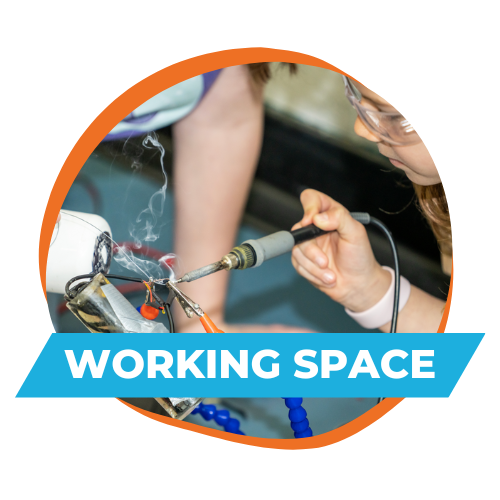
Working space is tight on many campuses, but ROV projects will need space for team meetings, technical instruction, discussion and training, and workshop space where student teams can design and build their ROVs. The workspace should be accessible after class hours and on weekends for students who can work on the ROV only at those times. Ideally, these spaces should be on your college campus.
Many ROV project advisors report getting support from their college administration for the use of available space on campus. This can be one space, like a lab that doubles as a classroom, or two or more spaces, like a classroom for team meetings and a lab for assembling the ROV. At other colleges, ROV projects were able to improvise by using temporarily idle classroom or lab space. One ROV project advisor reported using a small room in a campus Career Tech area; another was able to use an EET (Electronics Engineering Technology) lab for assembling the project’s ROV; still another reported finding useful working space in an old photo lab. But if some campus locations are not always an option, consider using space – at least for team meetings and discussions -- that may be available in your local community, such as church, library or local government meeting rooms or unused business office space. A number of ROV project advisors report having at times employed one or more of these or other non-campus options.
- Check first, of course, with your campus administration to see whether any classroom or lab/workshop space is available or can be made available. That could include space that awaits renovation, maintenance or remodeling (assuming the space is safe for occupancy in the meantime).
- If not, and if your campus administration approves, see if faculty whose classrooms or labs are not fully utilized will allow you to use their under-utilized space for ROV team discussions, technical instruction and presentations, training or even ROV design/build tasks.
- If there is no space available on your campus, space might be available in your local community. (Again, be sure to check with any college office that works with community or business groups to make sure that you don’t cross wires.) While an off-campus location may not be practical as a site to which you bring supplies and equipment back and forth, there may be space available for group discussions or technical instruction. Space might be available, for example, at local government or church meeting rooms, corporate offices, apartment complex common meeting spaces, Boys & Girls clubs or a YMCA, a mall meeting space, local bank meeting rooms, or even a private space such as a garage or barn.
- Don’t ignore the possibility that student team members or other faculty may have ideas for ways to identify or secure meeting space.
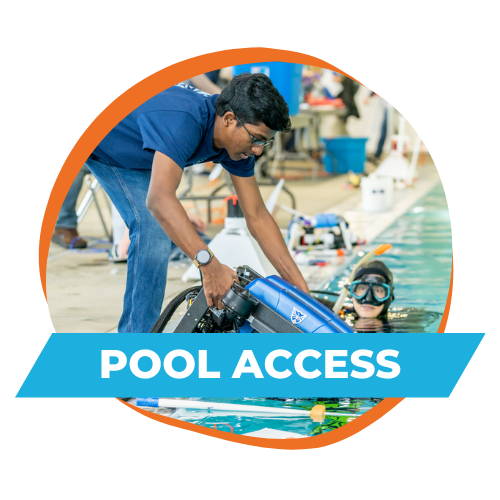
Every ROV project needs access to a pool that is big enough to accommodate thorough testing of its ROV.
Many colleges maintain pools that are used for sports or instruction and some ROV projects have been able to arrange times when they can use their college pool for testing their ROV. At one campus with a large pool, the ROV project advisor arranged to share the pool with its college SCUBA class. At campuses without pools, or where pool use time was too heavily booked to accommodate ROV testing, ROV projects have succeeded in obtaining access to one of the pools in their local communities. Some projects, for example, have been able to arrange pool use at local hotels or gyms. At one college, the ROV project used a pool at night at a nearby state university and a pool at a nearby apartment complex. At another college, the ROV project has been given access to a pool at a private club and reports that over time three private clubs have provided such access.
- If your college has a pool, of course try to arrange times when it is not being used for another campus function and can be turned over to you for testing your ROV. When you ask, be sure to be clear about how many times you will need access to the pool, how long it will be needed at those times, and the days and times, including weekends, when your project would be willing to use the pool. Be sure also to address any concerns on the part of college administrators that the ROV tests might damage the pool in some way.
- Some college pools may even be big enough to accommodate at the same time both another function and your ROV testing. If you must look off campus for a pool, make sure it is big enough to accommodate thorough testing of your ROV (i.e., piloting the ROV forward and backward, turning, descending and ascending) and is “hard sided,” so that your ROV tests will not damage a pool liner. Most communities have pools but some facilities may be concerned about user safety and other liability issues so you will need a plan to address those issues before seeking pool access.
- Pools can potentially be available at times at hotels, gyms, country clubs, high school or university campuses, recreation centers, apartment complexes, or even large pool contractors who maintain sample pools to show prospective customers. Some community and private pools can also be rented, like an Airbnb (see the app called Swimply.com). Rent payments in these cases could be a desirable substitute for cash contributions for some business sponsors.
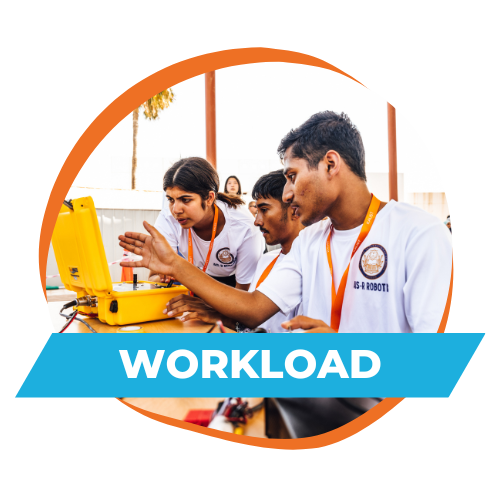
Students and faculty already have heavy workloads. If a new ROV project starts up, participants will have to find ways in which they can handle those workloads and still find time to build, test and compete with an ROV.
ROV project advisors have used many strategies to tackle the workload issue. One ROV project meets on Fridays, when students and faculty at that college don’t have classes. Another project has met for years on Saturdays (with lunch or dinner provided by the college or the advisor). Many advisors report that they front-load work on the ROV early in the semester and then during school breaks. They have made a point of knowing the cadence of the semester workload at their college and this has helped them to meet their work deadlines. By anticipating a heavier workload at the end of the semester they have been able to ease some of the timeline pressure for building and testing their ROVs. One advisor at a college on the quarter system, for example, has his team work very hard near the beginning of each term and during breaks. Then in weeks 7-10 the team meets for just one hour a week to touch base and make sure that parts have been ordered for work during an upcoming break. Early planning has also enabled advisors to establish which tasks can be done independently and which are more suited to small group interactions. In addition, advisors report being careful to distribute task assignments in order to avoid overburdening any student team members. One ROV team faculty advisor pursued a different strategy: He happened to teach a class in which students designed and populated circuit boards and he used those student products to inform the design and construction of the ROV at his college.
- Focus early on how to make the most efficient use of time. For example, survey students early to establish both the best times for regular meetings and when to set aside blocks of time for building and testing the ROV.
- In particular, ascertain whether student team members are able and willing to meet on days when there are no classes on campus and/or on weekend days.
- Make sure to understand the pace and timing of the semester (or quarter) student workload at your college and adjust your ROV work accordingly, giving particular consideration to concentrating the bulk of the work early in the term and during school breaks.
- Be sure that your student team workload is carefully distributed between individual assignments and small group work and that the distribution of tasks does not place too heavy a burden on any single individual or working group.
- If just one student possesses all or most of the knowledge needed to complete a critical task, valuable time will be wasted trying to fill knowledge gaps if that student is absent for any reason. Therefore, plan for information redundancy, so that no one person holds all the knowledge about a critical task.
- Consider the desirability of adding a second faculty advisor, perhaps breaking the advisor workload into technical and non- technical tasks (e.g., keeping track of meeting times, arranging meeting and workspaces, helping to secure pool access).
- See if any workload time can be saved by “filling two needs with one deed” -- identifying student products from another class you teach that can also be useful in your ROV design efforts.
- Anticipate that some team members may leave after they graduate, and the team will need to fill a workload gap between May and an ROV competition in June.

ROV projects should be seen on their campuses as legitimate functions that are consistent with the college mission and do not compete with other campus programs for limited resources.
Legitimacy has not been an issue on any campus that has hosted an ROV project. ROV team advisors have consistently reported that faculty, administrators and support staff at their colleges have been strongly supportive. One advisor reported that two of his campus deans came to ROV competitions and dropped in on students in labs, which the advisor described as very motivating for the students. In the rare instances where an administrator was not seen as supportive, advisors reported that the administrator tended to simply ignore the ROV project but was not actively hostile to it. However, none of the advisors took this support for granted. They kept their college community informed on a regular basis on team progress, and during competitions they often sent out daily updates on how their team was doing.
- Actively advertise the merits and achievements of your ROV project both throughout their campus and to your local community.
- If possible, make occasional presentations about the project to college, business and community audiences.
- Business or foundation sponsorship of an ROV student team is widely seen as an endorsement of the project that lends credibility and legitimacy to project efforts. Any such sponsorship should therefore be widely advertised both on campus and to the local community. (Business and foundation sponsors may also be happy to support these advertising endeavors.)
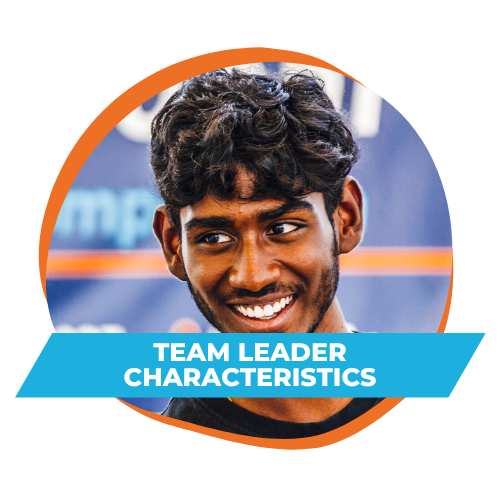
For an ROV project to be successful, it must be advised by a leader with the knowledge, skills, experience and temperament needed to lead a diverse student team in this complex and challenging endeavor.
ROV team advisors describe effective leadership characteristics in terms that are pretty universal among educators. They tell us that effective leaders listen to student needs and encourage students to take the lead in solving problems. They describe advisors who are not easily discouraged by temporary setbacks, do not hesitate to try innovative solutions to difficult problems, and dedicate time to mentoring students. We have been told that while technical knowledge in at least some of the skills needed to build and test an ROV is of course desirable, team advisors should also be prepared to admit they do not know all the answers, will work with students to problem-solve, and will reach out to experts for assistance where that is needed. Advisors report that their role as team leaders is much more open-ended than classroom instruction, since it is hard to know what degree of success a student team will have many months down the road. This can be somewhat unsettling, and demands flexibility, adaptability, and a willingness to tolerate uncertainty.
- ROV team advisors should know that the purpose of the MATE ROV competition is to strengthen student knowledge and skills, expose them to ideas and activities that will help them advance their education and career goals, and help them gain insight into their own thinking process and problem-solving strategies.
- Effective advisors should be clear that it is up to them to set an example for students by being willing to explore untried solutions to technical problems, reach out for assistance when necessary, show persistence in the face of temporary setbacks, and tolerate uncertainty when planning ROV designs and tests.
- Team advisors should also be comfortable encouraging students to take the lead in tackling ROV design and construction problems and will commit to mentoring students whenever possible.
- Not incidentally, effective advisors should also be willing and able to navigate their campus bureaucracies.
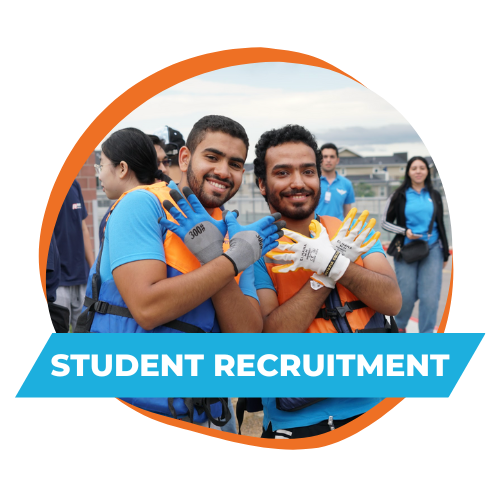
ROV projects must be able to recruit students with a serious interest in the science and engineering involved, who want to build or improve their employable skills and are likely to stick with the project through the competition phase.
Many well-tried student recruitment strategies have also been applied to the challenge of recruiting students for ROV teams. ROV projects have posted flyers around their campuses, have advertised on social media, and have brought in guest speakers from a variety of business that need employees with technical skills. Most advisors report having an open recruitment policy that brings a diverse cross section of students to their ROV teams. Some have emphasized recruitment aimed at the academic side of their campuses; others recruit directly out of classes they teach. Not surprisingly, many advisors report that it is hard to recruit motivated freshmen, many of whom have not yet decided on their academic direction (or how to balance their schedules). Some recruitment campaigns have therefore tended to concentrate on more experienced students. One ROV team advisor has created a one-unit class where students design, build and operate a mini-ROV. He advertises this class using campus flyers and through emails to his students before classes begin in the Fall. Enrollment in his class requires no programming or electronic skills but introduces students to those topics. About half of his students join his ROV team.
- Develop flyers, student newspaper ads and social media campaigns that advertise the benefits of ROV team participation, with particular emphasis on student opportunities to acquire employable skills.
- Invite guest speakers to campus from businesses that employ marine technicians, civil engineers, automobile technology technicians and technicians in other fields where student skills gained from participating in an ROV team could contribute to employment opportunities.
- Once students express potential interest in joining an ROV team, show those students the advantages of team participation, such as building their resumes, acquiring or sharpening employable skills, and gaining exposure to a range of industries that hire employees who possess those skills.
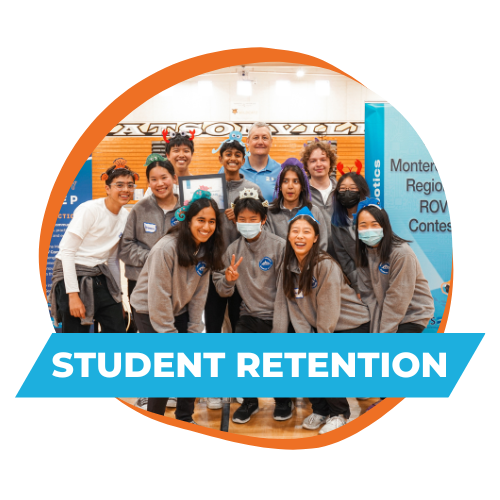
Advisors must find ways to make sure that student team members remain motivated to continue their participation in the ROV project.
Student retention issues often trouble campus ROV projects. One advisor pointed out that in most years it would take about 20 students starting in the Fall to end up with a solid team of around 10 students by the end of the competition year. But there are two types of retention issues. One type consists of pressures on students that are not susceptible to control or intervention by an ROV team advisor. These pressures are not a question of student motivation, but include family issues, economic pressures that require a student to be employed, or academic schedule conflicts or over-commitments. Some students simply graduate and start working before their team tests its ROV or travels to a competition. Some ROV team advisors have tried to deal with these issues by interviewing prospective team members to see if there are potential conflicts of this kind. Many advisors over-recruit in the expectation that some students will inevitably leave the team before its ROV is built and tested or entered into competition. So, some retention issues are unavoidable and ROV projects should plan accordingly. A second type of retention issue, however, consists of student problems that are more amenable to intervention. For example, one advisor noted that he saw his student dropout rate increase once students realized that the work was getting harder over time. Other students had avoidable schedule conflicts; still others did not clearly see the connection between project work and career opportunities or felt swamped by their project responsibilities. Project advisors do have some leverage with these types of problems, and they have counseled and assisted students in a variety of ways designed to help them stick with their ROV team. In short, while there is no perfect solution to the student retention issue, advisors report that much can be done to motivate students and make sure they stay engaged in the entire spectrum of ROV project tasks.
- Help students who join the ROV team plan their study schedules so they can fit ROV tasks around their academic responsibilities.
- Assign tasks to students that are consistent with their competence levels, particularly as the work grows harder.
- For students who are still worried about keeping up, encourage them to join study groups or arrange to be tutored, and mentor them whenever possible.
- Create some work redundancy across students in ROV component building so that any one student does not feel overwhelmed.
- Help students with schedule conflicts plan their study programs and show them better time management skills.
- Show students who have difficulty seeing the connection between project work and their long-term interests how the skills they learn on the ROV project can advance their educations, build up their resumes, help them with job interviews and job placement, and expose them to industries they may not have realized were interested in the skills they will be learning.
- Try to strengthen student loyalty by introducing team-building exercises, creating a project social media presence and recognizing and publicizing team achievements.
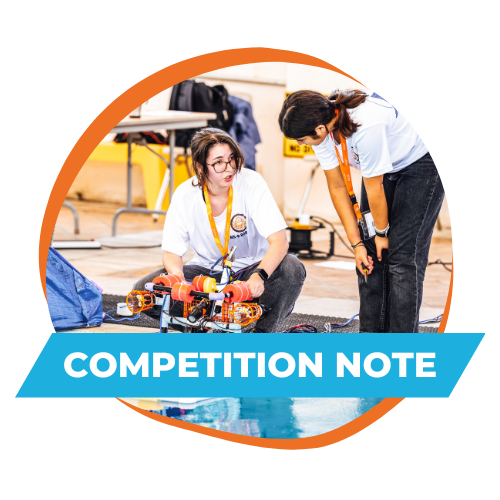
College teams compete only with other teams that have similar levels of experience.
The competition is organized into five categories:
- SCOUT (beginner)
- NAVIGATOR (beginner-intermediate)
- RANGER (intermediate)
- PIONEER (intermediate-advanced)
- EXPLORER (advanced)
These competition categories are not defined by grade level; student teams can progress to the next level as they build upon their knowledge and skills.
For more information about these competition classes, click here.
Evaluate-Compete is a method that helps students:
- Identify the range of knowledge and skills they will need as they continue their educations and enter the workforce,
- Strengthen their knowledge and skills through participation in the ROV competition,
- Recognize areas where they need to improve,
- Understand their strengths and weaknesses, and
- Identify learning strategies that will help them gain a competitive edge.
Evaluate-Compete benefits faculty advisors by providing clear data on their students’ strengths and weaknesses as they guide them through the steps involved in designing, building and testing ROVs.
To learn more, click here.

